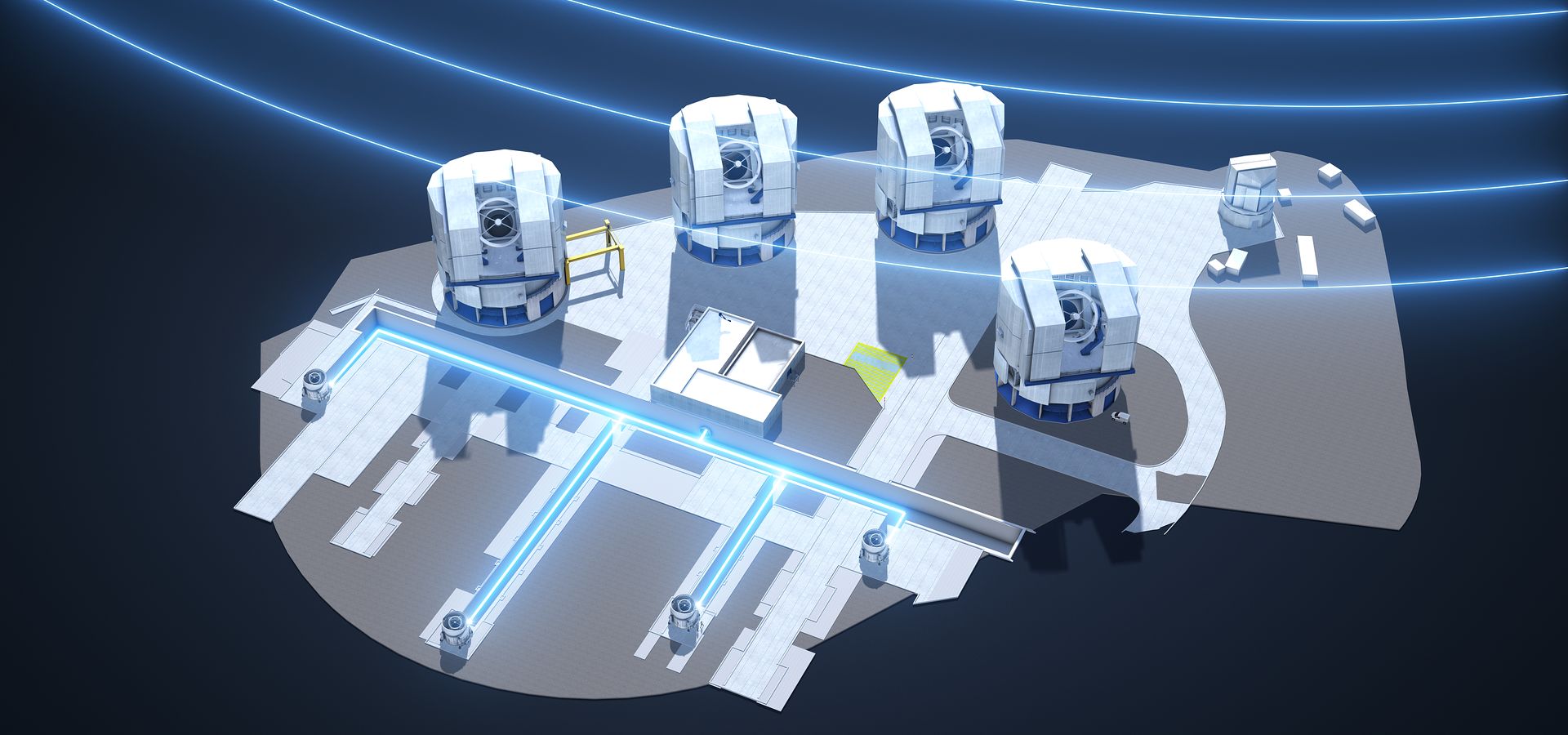- What are some of the scientific discoveries obtained with the VLTI
- What are the future plans to improve the capabilities of the VLTI
Twenty years ago, on 29 October 2001, two of the 8.2-m telescopes at ESO’s Very Large Telescope (VLT) were linked for the first time into a huge virtual telescope: the VLT Interferometer (VLTI). In the previous two articles in this series we heard from some of the people who made this feat possible. In this final post we will tell you about some of the amazing scientific results obtained with the VLTI, and what the future holds for this unique facility.
Despite their huge sizes for human standards, astronomical objects are so far away that studying them in detail requires incredibly large telescopes. The largest optical telescopes have mirrors 8-10 m wide, and ESO’s Extremely Large Telescope currently under construction in Chile will have a 39-m mirror, the largest of its kind. But discerning the smallest details on cosmic objects often requires even bigger telescopes, well over 100 m wide.
Fortunately, a technique called interferometry allows us to circumvent this problem by linking several telescopes into a single virtual one as large as the separation between them. ESO’s Very Large Telescope Interferometer does precisely that: it combines the light of up to four 8.2-m Unit Telescopes (UT) or four 1.8-m Auxiliary Telescopes, the equivalent of a 130-m or 200-m wide telescope, respectively.
The VLTI has enabled a wealth of astronomical discoveries, from directly studying the atmosphere of exoplanets to testing General Relativity around the supermassive black hole at the centre of the Milky Way. In this article we will learn about some other fantastic results as told by their protagonists, and how ESO's VLTI is currently being improved even further.

Sebastian Hoenig
Sebastian Hoenig is a Professor of Observational and Computational Astrophysics at the University of Southampton in the UK, where he also serves as Head of the Astronomy Group.
All the big galaxies in the Universe harbour a supermassive black hole in their centre with masses of millions to billions times that out our Sun. How did they grow so big? We don’t quite understand this yet, but we do know that these black holes undergo episodes of growth when they gobble dust and gas from their host galaxies. This material gets very hot and shines as bright or brighter than all the stars in the galaxy around it. This is what we call Active Galactic Nuclei (AGN) and we observe them to understand how supermassive black holes grow.
To see gas and dust falling onto supermassive black holes we need to discern tiny scales, smaller than the distance between the Sun and the nearest star, in galaxies that are tens or hundreds of millions of light years away. The VLTI is the only way we can test our hypotheses of how supermassive black holes grow.
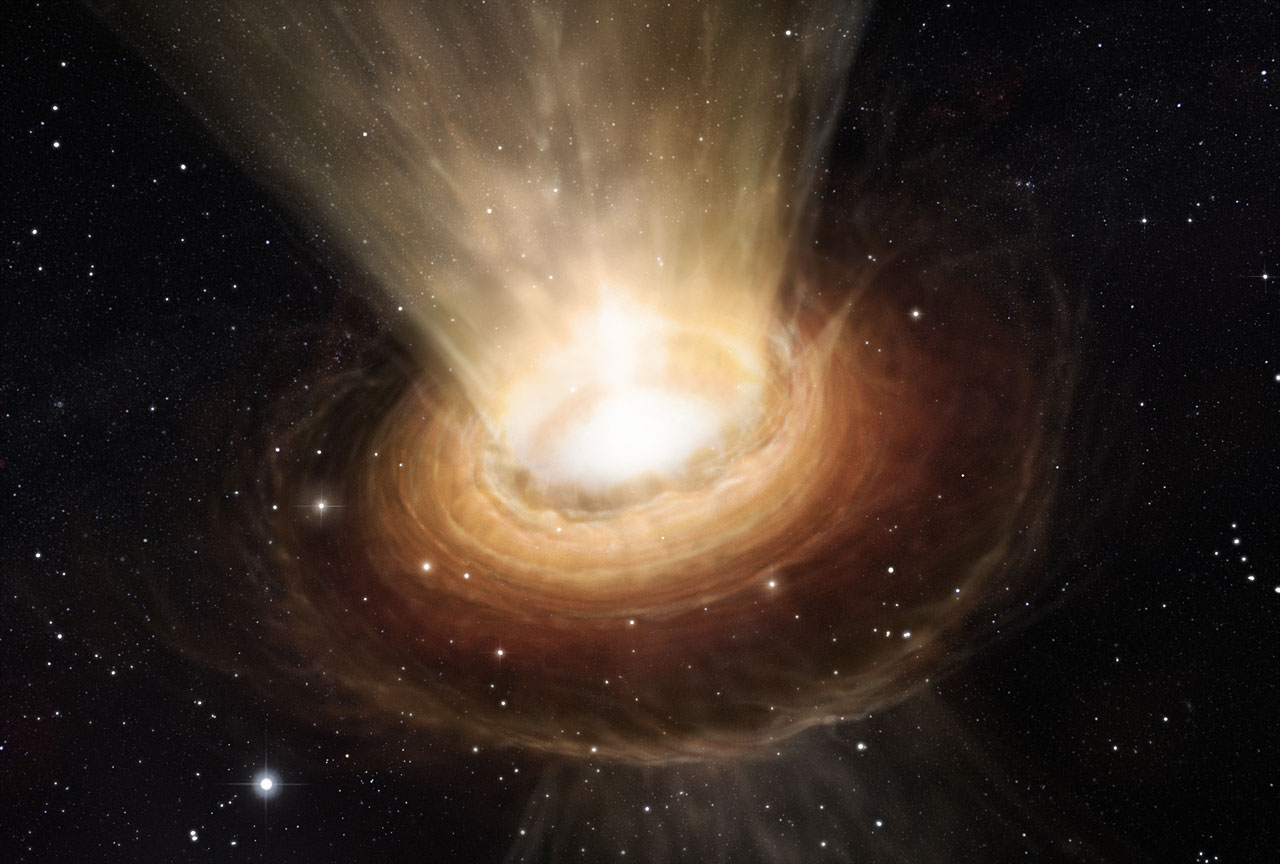
The VLTI observes at infrared wavelengths, and can detect warm dust that is mixed together with gas. We thought that this dusty gas forms a thick doughnut around the AGN. But in 2012 and 2013 we observed some AGN with the VLTI in great detail, and found that a lot of dust was present in a region where we didn’t expect it: above and below the doughnut. We now think that a significant amount of the dust is blown away by the strong radiation from the AGN. This dusty wind can carry material from very small scales away into the galaxy or even out of it. Without the VLTI, we wouldn’t have been able to see these dusty winds.
Observing AGN with the VLTI is often challenging as we are pushing the system to the faintest limit of what can be detected. It’s always great to work together with the telescope/instrument operators and the support astronomers to find the best settings that make everything work. Always worth the chocolate I bring along!
I am one of the co-investigators of GRAVITY+, an upgrade to the current GRAVITY instrument at the VLTI. Among other results, GRAVITY tested Einstein’s General Relativity close to the supermassive black hole at the centre of our galaxy, a result that contributed to the 2020 Nobel Prize in Physics. We are now improving the instrument to make it orders of magnitude more sensitive and open up interferometry to many new science topics. I am excited to see what new scientific ideas the ESO community can come up with once GRAVITY+ is available.
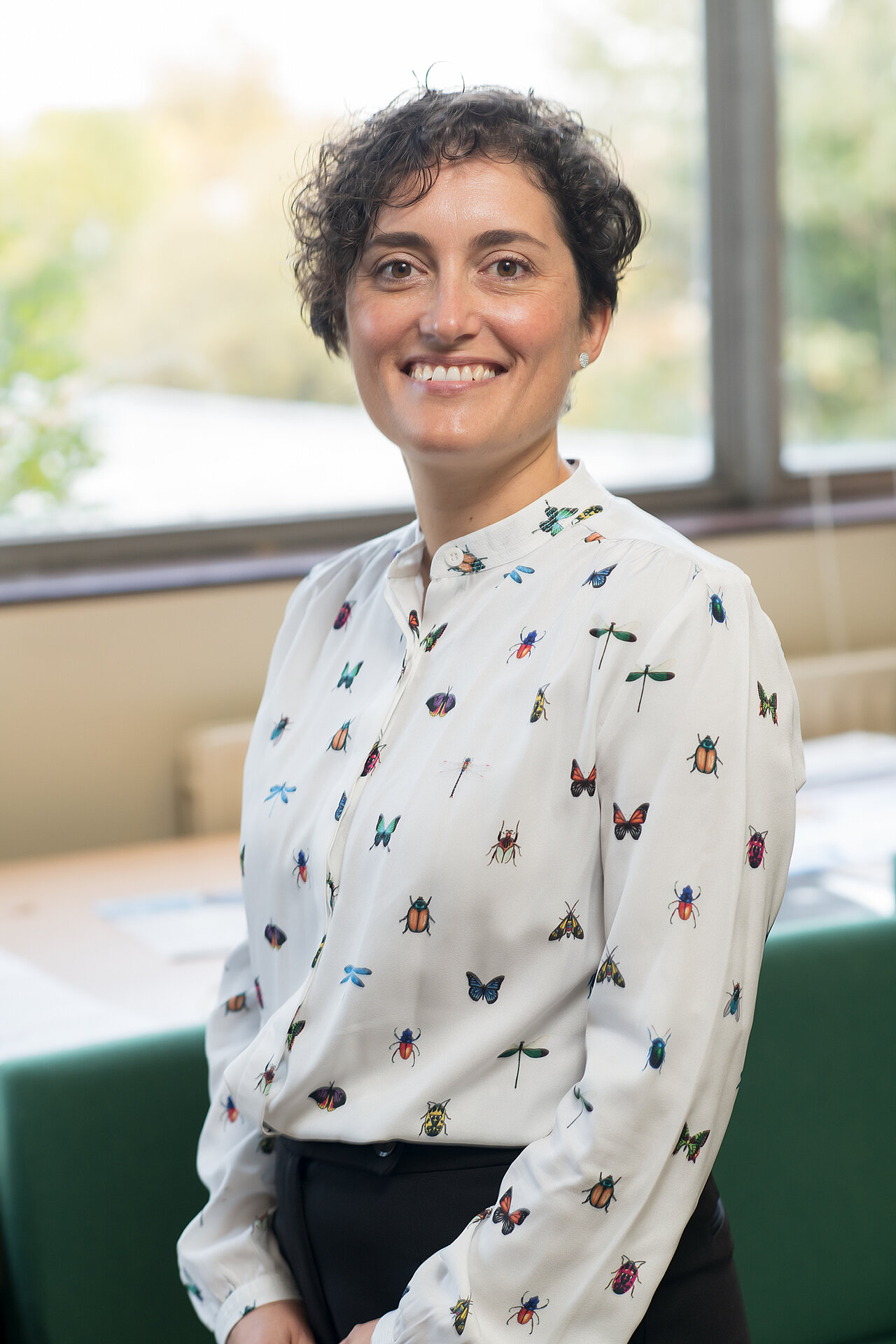
Rebeca García López
Rebeca García López is a Lecturer/Assistant Professor at University College Dublin in Ireland, where she holds an Ad Astra Fellowship.
Stars are not eternal; like humans, they are born, evolve and die. Stars form within clouds of gas and dust, when a dense region within one of these clouds starts to collapse, and a disc of matter forms around the infant star. In this early phase, matter from this disc falls onto the star. With time, and as the material within the disc falls and disperses, planets will form.
The closest young stellar objects are more than 400 light years away, which makes it really hard to distinguish fine details in them. To observe an analogue of our Solar System 400 light years away, we would need a telescope around 50 m in diameter to distinguish planet Earth from the parent star. Building such a telescope poses many technological challenges, but interferometry allows us to circumvent this. With the VLTI we can achieve a resolving power equivalent to that of a 130-m telescope, which allows us to obtain incredible details of the inner regions of protoplanetary discs at orbits equivalent to that of the Earth or even closer to the parent star.
For a very long time astronomers suspected that young stars collect matter via their magnetic fields, and that this material falls towards the surface of the star at supersonic velocities. However, how matter from a planet-forming disc is channeled onto the stellar surface had never been observed before, because the nearest young star is so far away that it requires some of the biggest telescopes in the world, and very sophisticated instrumentation. In 2019 we used GRAVITY to observe hot gas around the star TW Hydrae, and found that its size and velocity matched what theoretical models predicted.
Paranal is like heaven for astronomers, much better than any 5 star hotel you could be in. There everything revolves around science, excellence, and state-of-the-art instrumentation. Every time I go there I feel like a child on Christmas morning. My fondest memory is the first time I observed with the VLTI using three of the four 8-m UT telescopes with the AMBER instrument. I felt like the master of the Universe. All those people just working for you: engineers, telescope operators, support astronomers, almost the full control room working for you! A lot of responsibility, but a lot of fun as well. Later on, I had the opportunity to use all four UT telescopes at the same time with GRAVITY, this time the full control room for you!
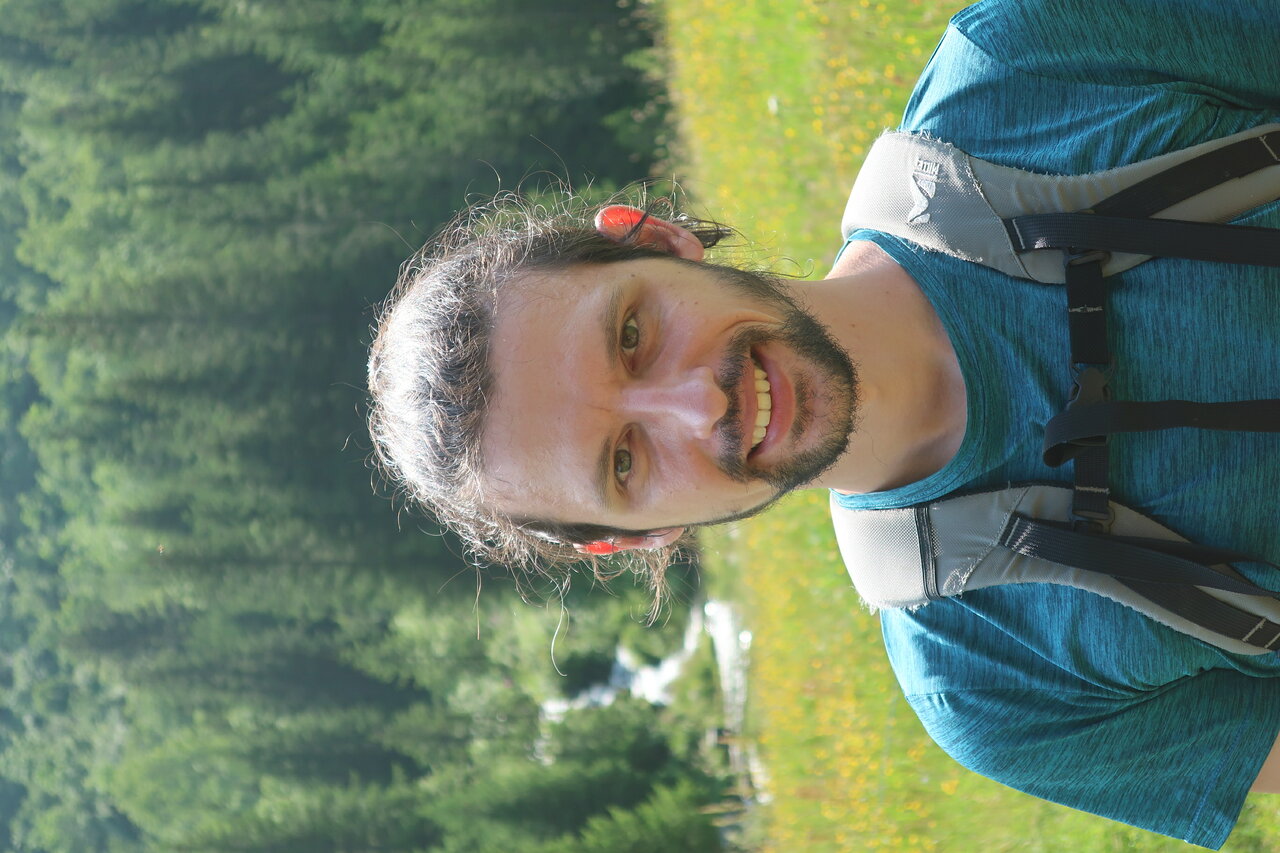
Jacques Kluska
Jacques Kluska is a FWO senior postdoctoral fellow at KU Leuven in Belgium, as well as lead scientist of the Belgian VLTI expertise centre.
Exoplanets are planets that are orbiting one or several stars other than the Sun. Studying how exoplanets are born is also important to understand how planets in our Solar system formed, including Earth. This is key to understanding our origins, to estimate how common exoplanets like the Earth are, and which ones would be able to host life.
Planets form around young stars (less than 10 million years old), which are surrounded by a disc of dust and gas that looks like a pancake with the star in a little hole at its centre. Dust grains in this disc will grow and will come together to form planets. Earth-like planets are thought to form in the inner regions of such discs, close to the star. The VLTI has been able to observe not only the structure of discs where Earth-like planets form, but also determine the kind of dust grains we can find there, which are the building blocks of these future planets.
We recently obtained 15 images of such planet-forming discs using the VLTI. These images reveal the disc regions within 5 astronomical units –– 5 times the Sun-Earth distance –– from the central young star, with details as small as a tenth of an astronomical unit! In other words: we can see the environment in which future Earth-like planets may form. This achievement is the result of a long-term technological development that led to the construction of the first instrument that can combine four telescopes at the VLTI: PIONIER. I started my PhD at the end of this process and was lucky to be in position to produce these images.
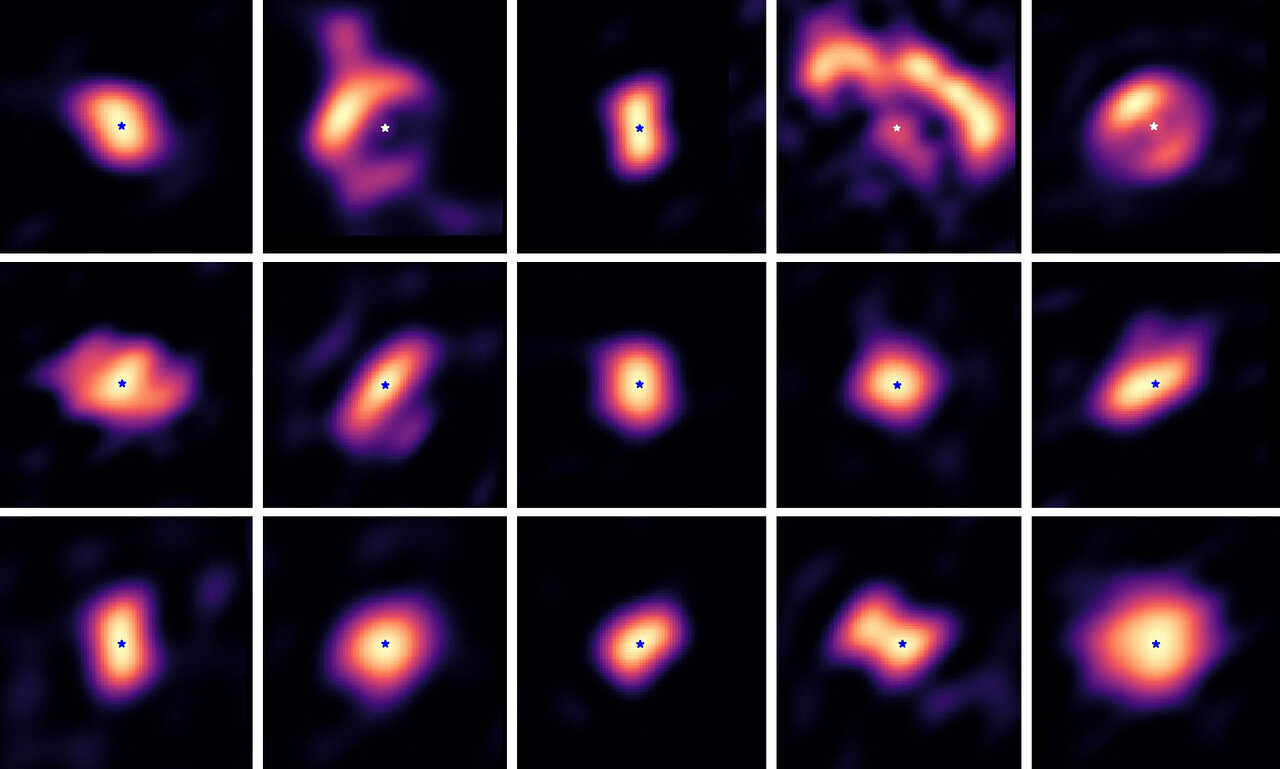
I’ve been to Paranal several times during my PhD. It was always super exciting and it was never difficult to switch to a night schedule because of the excitement to observe with the VLTI! Sometimes I encountered unexpected challenging situations. I remember one occasion when an optical fibre of PIONIER failed. Together with Jean-Philippe Berger, who was my PhD supervisor and who initiated the development of PIONIER, we had to replace the whole integrated optic component with a spare one, and realign the whole instrument before the night started. It took us the whole day, and it was actually a lot of fun to manipulate the instrument and discover all its details.
Claudia Paladini
Claudia Paladini is a staff astronomer at ESO in Chile. She is one of the Instrument Scientists of the MATISSE instrument, and the coordinator of the VLTI at Paranal.
Stars spend most of their lifetime in a stage called the main sequence, where our Sun currently resides. The term “evolved stars” refers to stars beyond this stage. When stars reach this stage of their life, they develop winds and start spreading around them all the material (atoms, dust, molecules) they produced during their life. Evolved stars are therefore like the farmers of the galaxy: they plant chemical species that will then grow in new stars, planets, and eventually life.
Evolved stars are very complex, and this makes it hard to interpret the data without actual images. But obtaining images with interferometry is challenging. Luckily the VLTI is equipped with instruments that can combine the light of four telescopes, which makes this easier than before.
With optical interferometry we can now see distant stars like we see the Sun: not as a point source anymore but a resolved stellar disc. Thanks to the sharp eyes of the VLTI we can directly observe the bubbling gas on the surface of these stars, the onset of stellar winds, or where dust forms around these stars.
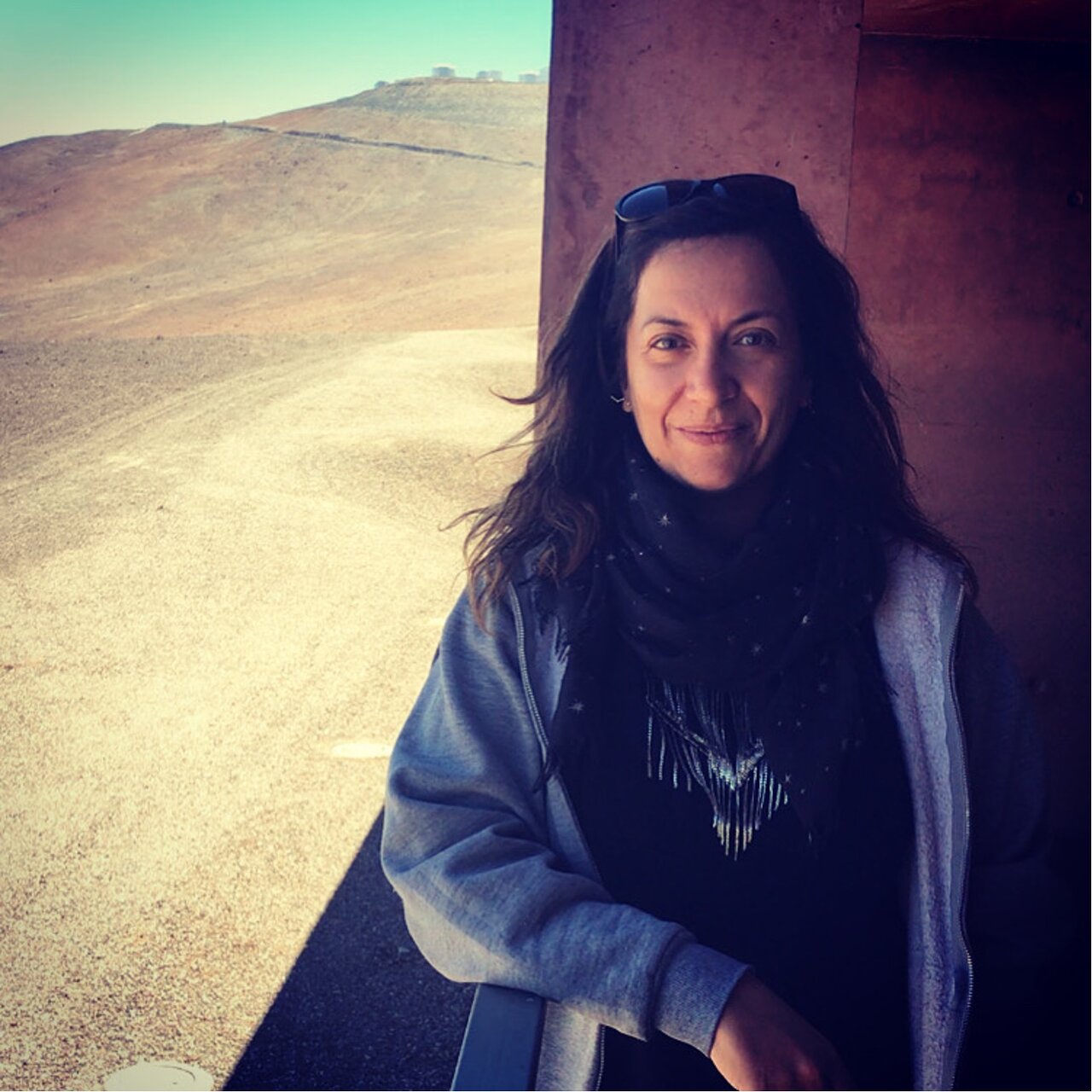
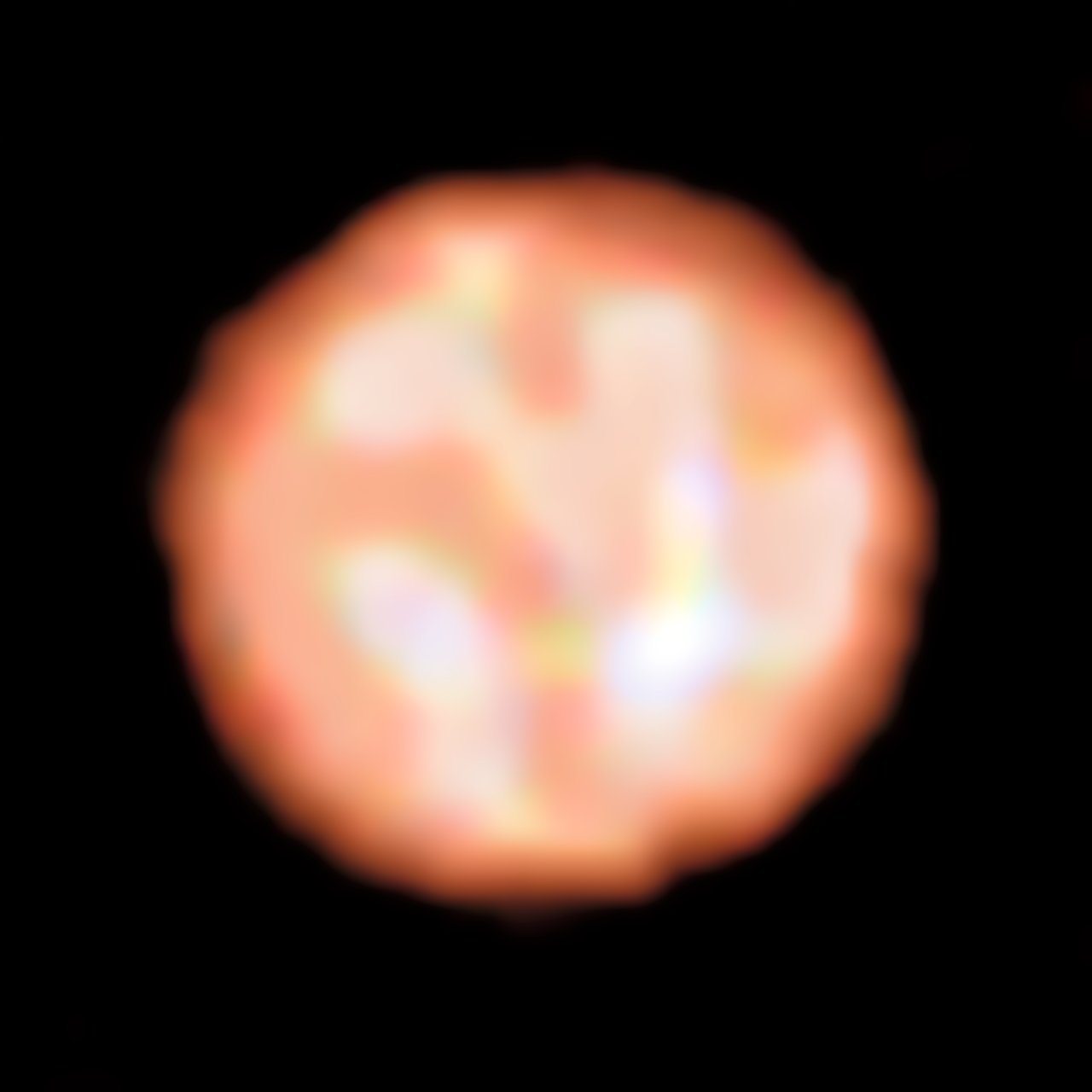
I am lucky enough to be part of the generation of "interferometrists" able to produce such images. My favourite result in this regard is our PIONIER image of π1 Gruis, a red giant star 530 light-years away. We were able to see the granulation on its surface caused by convective cells that transport material up and down the star. We could even measure the size of these cells, proving the prediction made for this class of stars in 1975 by the German physicist and astronomer Karl Schwarzschild.
One of my fondest memories of the VLTI was bringing the MATISSE instrument back into operations after the COVID break. After one week of testing, on the night of Dec 13th 2020 we observed the red supergiant star Betelgeuse. Exactly one hundred years earlier that day, the American physicist Albert Michelson and astronomer Francis Pease observed the same star with interferometry, maring the first ever measurement of the diameter of a star other than the Sun. Our team was very excited!
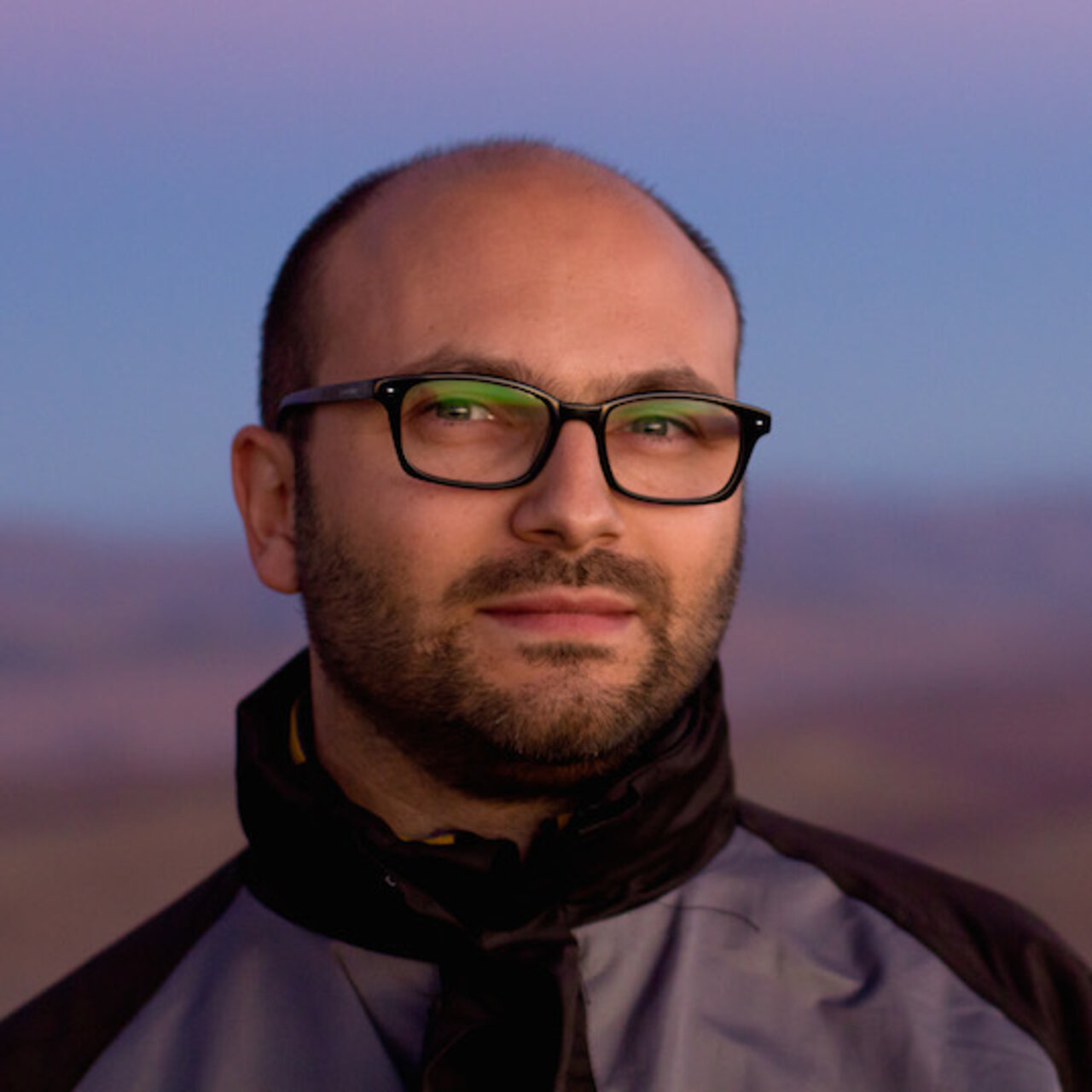
Antoine Mérand
Antoine Mérand is a staff astronomer at ESO in Germany. As the VLTI Programme Scientist, he oversees the strategic development of the VLTI.
The original vision for VLTI was ambitious in terms of sensitivity and image resolution. The VLTI has not yet reached its full potential, and amazingly the path laid out more than 30 years ago is still up to date. Improvements to the VLTI are a strong component of the currently ongoing developments to maintain the scientific performance of the VLT and VLTI in the 2030's, started in 2019 by a conference held at ESO.
Among the many projects proposed by the community is the ambitious GRAVITY+ project, aiming at dramatically improving the sensitivity of VLTI by installing a new adaptive optics system and laser guide stars in all four UTs, which will make it possible to observe fainter stars.
GRAVITY+ has successfully passed its preliminary design study in July 2021 and currently awaits decision to go ahead for construction. Among the unique science cases are: a better understanding of AGNs and their close environment in the role they play in the evolution of galaxies, an unparalleled precision in determining the orbits of exoplanets to constrain planet formation scenarios, and a unique depth of exploration of the Galactic Centre to potentially measure the spin of our Galaxy's central black hole, Sgr A*.
Other smaller initiatives are also welcomed at VLTI, called visitor instruments, which are dedicated small instruments aimed at specific science cases. Many such projects exist in the community which, in addition to GRAVITY+, promise a dynamic future for VLTI, full of exciting and unique astrophysical results.

